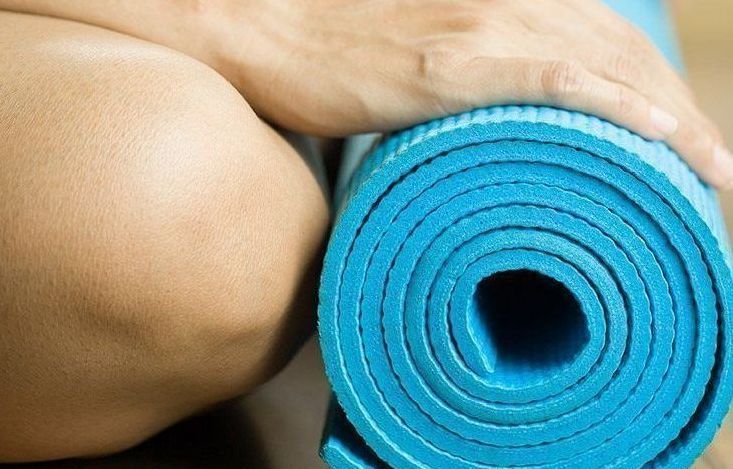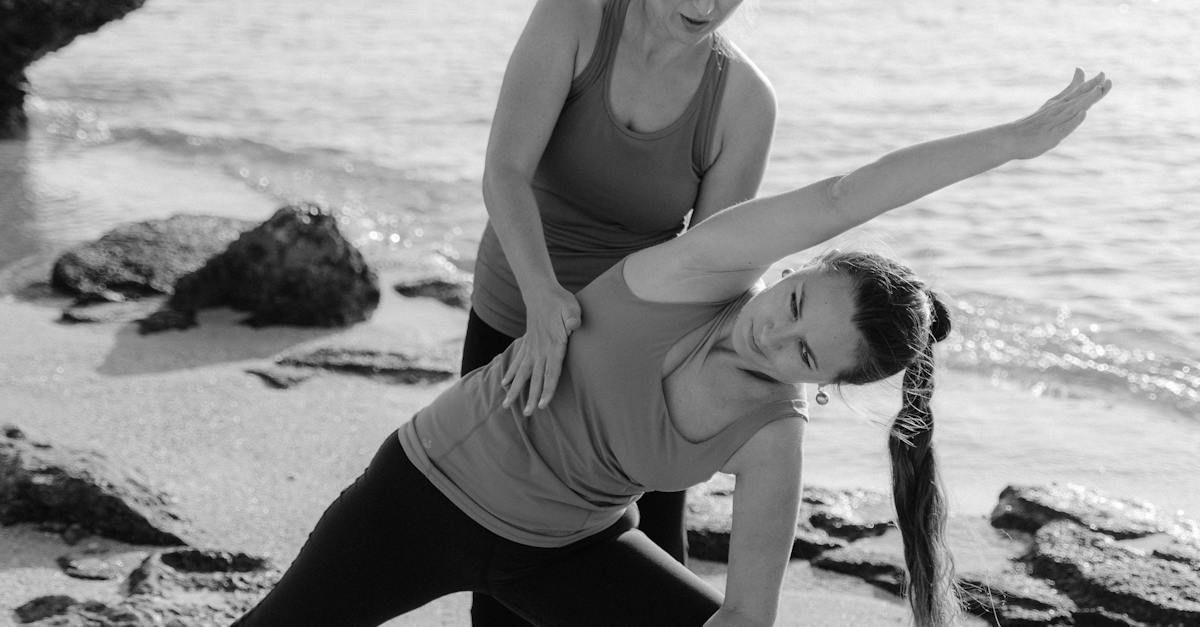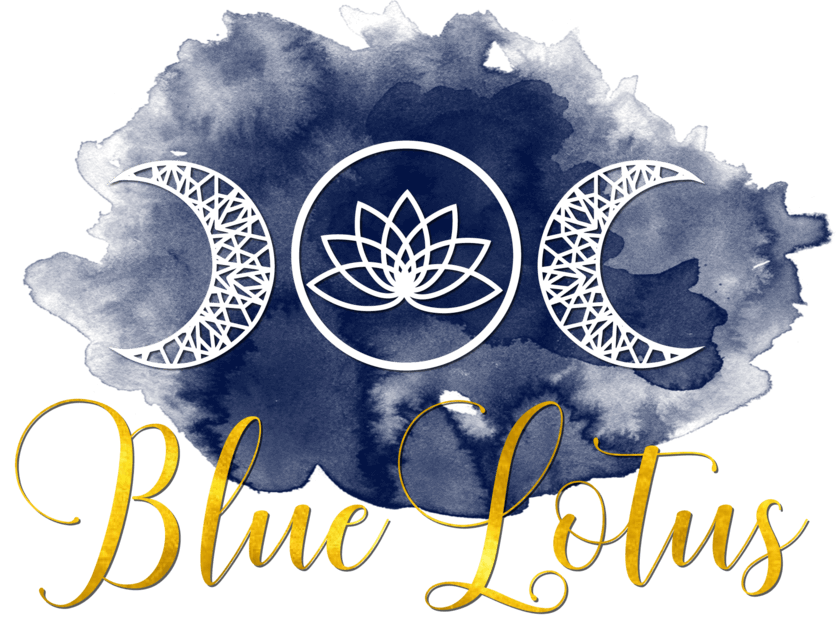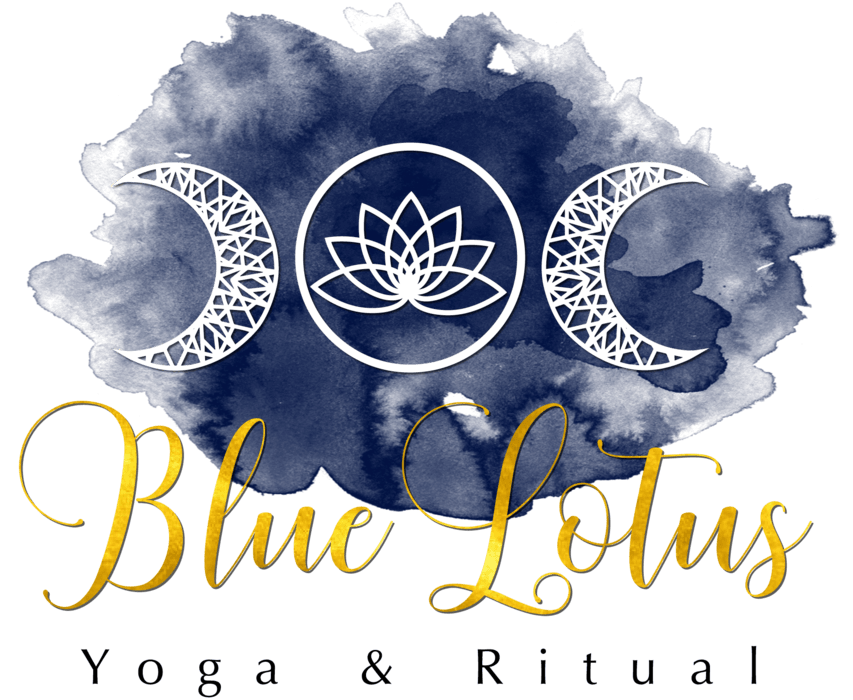My Weekly Musings...

There’s something truly magical about the serene ambiance of a yoga studio—the soft lighting, the calming colours, and the absence of clutter create the perfect environment for spiritual practice. But what if you could recreate that tranquil atmosphere within the comfort of your own home? With a few simple tips and tricks, you can transform any space into a sacred sanctuary for yoga and meditation without breaking the bank. Here are five budget-friendly ways to create your own yoga oasis at home:
-
De-clutter: The first step to creating a peaceful sanctuary is to clear out the clutter. Remove any unnecessary items from the room and only keep things that serve a functional or aesthetic purpose. This will help create a sense of spaciousness and calm. Consider investing in storage solutions like baskets or shelves to keep your yoga props organized and out of sight when not in use.
-
Choose calm colors: The colors you choose for your yoga space can have a big impact on the overall mood and energy of the room. Opt for soft, muted tones like pale blues, greens, or earthy neutrals that promote a sense of tranquility and relaxation. Using non-toxic paint is not only better for your health but also aligns with the holistic principles of yoga.
-
Set the mood with lighting: Lighting is key to creating the right ambiance for your yoga practice. Install dimmer switches on overhead lights to adjust the brightness according to your needs, and incorporate lamps with soft, warm bulbs for a cozy glow. Lightweight curtains made from natural materials like cotton can help diffuse harsh sunlight and create a more serene atmosphere.
-
Accessorize with intention: Enhance the sensory experience of your yoga sanctuary by incorporating accessories that appeal to your senses. Light scented candles or burn incense to create a soothing aroma, and consider adding a small altar or shrine where you can display meaningful objects like crystals, flowers, or statues that symbolize your intentions and aspirations.
-
Hunt for treasures: You don’t need to spend a fortune to find beautiful decor for your yoga space. Explore local flea markets, thrift stores, and salvage yards for unique treasures that speak to your soul. Look for vintage rugs, tapestries, or artwork that add character and charm to your sanctuary, and don’t be afraid to get creative with DIY projects to personalize your space even further.
Creating a home sanctuary for yoga is not just about creating a physical space—it’s about cultivating an environment that nourishes your mind, body, and spirit. By following these budget-friendly tips, you can design a sacred space where you can retreat from the chaos of the world and reconnect with yourself on a deeper level.
So roll out your mat, light a candle, and let the journey to inner peace begin right in the comfort of your own home.

Exploring the depths of seasonal living extends beyond merely embracing the benefits of eating locally and in rhythm with nature, as it encompasses a profound alignment with the cyclical changes that shape our environment and our inner selves.
Throughout the year, we traverse a kaleidoscope of colours, scents, daylight hours, available nourishment, temperatures, and transformations within our bodies. Just as nature undergoes its ebbs and flows, so do we thrive by attuning ourselves to the natural cadence of the seasons. Rooted in the concept of parinamavada—a Buddhist philosophy acknowledging life's perpetual flux—aligning with these seasonal shifts offers a pathway to rediscovering our innate connection with the natural world, a bond cultivated over millennia of evolution.
As we transition from the vibrant warmth of Spring into the sweltering embrace of Summer, the palpable shift in energy is undeniable compared to the introspective coolness of Autumn and Winter. While many may have already begun their journey into seasonal living by adopting practices like local eating or adjusting their yoga routines to match the seasonal vibes, it's crucial to recognise that this alignment extends beyond dietary and exercise adjustments.
From our daily habits and social interactions to our sleep patterns and environmental choices, every aspect of our lives is intertwined with the changing seasons. While maintaining a consistent daily rhythm is beneficial, true vitality emerges when we acknowledge our symbiotic relationship with the world around us. By aligning our lifestyles with the seasons, we not only nurture our own well-being but also contribute to the health of the planet.
Here are four ways to embrace seasonal alignment and fully immerse ourselves in the beauty of each seasonal phase:
-
Embrace Seasonal Eating: Beginning with the simple yet profound practice of seasonal eating, we embark on a journey of nourishment that honors both our bodies and the environment. By consuming locally grown produce, we reduce our carbon footprint and embrace the freshest nutrients nature has to offer. Moreover, seasonal eating allows us to attune our diets to the specific nutritional needs dictated by each season. During the sun-drenched days of Summer, fruits rich in sugars are easily digested, fueled by ample sunlight and vitamin D. In contrast, the subdued light of Winter calls for a shift towards hearty, nourishing fats. Spring heralds a season of renewal, with bitter greens signaling a natural detoxification and a lightening of our culinary fare, preparing us for the vitality of the season ahead. By listening to the messages encoded in seasonal foods, we empower our bodies to thrive in harmony with nature's rhythms.
-
Align Your Movement with the Seasons : Just as the natural world undergoes a cycle of growth and dormancy, our bodies too respond to the changing seasons with varying needs for movement and rest. Tuning into our intuitive wisdom, we can discern the types of movement that best support our well-being throughout the year. While vigorous activities may invigorate us during the expansive energy of Spring and Summer, the cooler months of Autumn and Winter beckon us towards gentler, more introspective practices. Research suggests that humans evolved to engage in longer, more active pursuits during the warmer seasons, while prioritizing rest and restoration during the colder months. Embrace outdoor yoga sessions or leisurely nature walks when Summer graces us with its warmth, and cozy up with blankets and bolster-supported poses as Winter draws near.
-
Socialise in Sync with the Seasons: Our social rhythms, too, echo the changing tempo of the seasons. Rather than succumbing to societal pressures to maintain a constant whirlwind of activity, we can honor our natural inclinations towards social engagement and solitude in alignment with the seasons. Summer invites us to bask in the warmth of communal gatherings and vibrant social circles, while Winter gently nudges us towards cozy evenings spent in intimate company. By oscillating between periods of extroversion and introversion, we not only nurture our closest relationships but also safeguard our energetic reserves. Keeping a journal throughout the year can serve as a valuable tool for tuning into our energy levels and discerning our social needs.
-
Harmonise Your Sleep Patterns: As one of the cornerstones of holistic well-being, sleep demands our attention as we navigate the changing seasons. While our sleep requirements fluctuate throughout the year, they are intricately linked to our adherence to seasonal practices such as eating, movement, and socialization. Balancing our circadian rhythms by rising with the sun and retiring soon after sunset forms the bedrock of healthy sleep habits. However, our sleep needs may vary, with Winter calling for longer periods of rest and Summer allowing for more moderate slumber. Support your sleep with rituals such as soothing baths or morning routines that embrace the vitality of each season.
In embracing the rhythm of the seasons, we embark on a journey of self-discovery and ecological harmony, aligning our lives with the timeless wisdom of nature. Through mindful eating, intentional movement, conscious socialisation, and harmonious sleep, we honour the cyclical dance of life, finding sustenance, vitality, and connection in every season.

In the labyrinth of life, the journey through midlife often marks a profound and transformative period for women. As we navigate the challenges and joys that come with this stage of our lives, it becomes essential to harness the power within and embrace the wisdom that only time can give us. I for sure, feel more confident and self assured, as I hit my 50's than I have done in any other time of my life. In fact as soon I hit 50 I seemed to adapt a 'don't give a s**t' attitude that has helped my to feel more empowered, appreciate and love my body and connect to an inner strength that has probably always been there but I was unsure, until this point in my life, how to embrace it.
Of course my practices of yoga & ritual have definitely helped me on this voyage of discovery and here's how:
1. Connect with Your Inner Strength:
Through yogic practices and rituals that align us not only with the seasonal shifts but also practices that align us with the seasons of our life, we can tap into the wellspring of inner strength that lies within. Practicing Asanas (yoga postures) with the intention of embodying strength, courage resiliency & tenacity that are needed to face life's challenges head-on, foster a renewed sense of empowerment. That's why I adore teaching the myths of asana as the stories are playing out within us and their wisdom is brought to life as we relate to their teachings.
2. Cultivate Self-Love through Mindfulness:
Yogic philosophy emphasises mindfulness and self-awareness. Through meditation and reflection, midlife women can cultivate a deeper connection with themselves, fostering self-love and acceptance. Through the power of quiet & inner reflection we learn to appreciate the beauty of the present moment, embracing all that has brought us to this point in our lives and honouring & accepting fully the woman you've become.
3. Nurturing Your Body, Mind, and Spirit:
As we explore the holistic nature of women's wellness through the lens of yoga we remember that the body, mind, and spirit are interconnected. By incorporating breathwork (pranayama) and give ourselves space to 'feel' into our body we learn to move in a way that brings overall well-being and balance. This awareness lays the foundation for a positive body image and fosters a sense of gratitude for the vessel that has carried us through all the high's & low's of our life's journey thus far.
4. Yoga for Body Positivity:
In our practices we also explore how to celebrate your body's capabilities and uniqueness. I spent so many years trying to change shape, be like teachers that I revered.....What a waste of time!!!! I so wish I knew then, what I know now, that each body is a temple, deserving of love and respect and when we truly can find ease in the inner landscape we learn to see the beauty of your body in every stage of life.
5. Leaning into a Supportive Community:
For years I had the great fortune to sit in women's circles and boy did I learn a lot! Usually the emotions, life adventures, feelings and stories were similar for every woman present and this experience cultivates deep connection to others and to ones self. These shared experiences, offer encouragement, and celebrate the collective strength of women who embrace their wisdom years & empower each other.
As I continue to grow and share through my own intricate tapestry of midlife, it is my heart felt desire to embrace the wisdom and strength that yoga imparts, creating a community of empowered women who thrive in wellness and celebrate the beauty of every stage of life. Thank you for being here!

Whether you're an amateur photographer, a watercolorist, a summer knitter, or a weekend woodworker, the act of creating art can immerse you in a state of complete presence, awakening, and vitality.
Beyond its renowned benefits for easing the body and quieting the mind, yoga emerges as a powerful tool for tapping into and mining our creative selves. This blog explores how meditation and yoga not only grant access to the deep realms of our psyche but also provide valuable tools to overcome obstacles, fostering a stronger connection between your yoga practice and your creative mind, body, and soul.
Dropping into Creative States:
The path to creativity isn't always straightforward, especially when daily distractions and scattered thoughts disrupt the stillness and presence needed for artistic expression. Yoga proves to be a gift for artists, as the practices of asana, pranayama, and meditation cultivate awareness, helping us shed the distractions of the mind. From this clear and focused state, inspiration effortlessly emerges. By quieting the thinking mind, yoga allows us to access an intuitive and deeper sense, where choices in words, colours, or movements arise organically.
Fueling the Creative Process:
Artistic fulfilment is intricately linked to the ability to access and sustain creative states. Yoga serves as a catalyst for this process by enhancing and directing the flow of prana, the intelligent life force, through the body's energy conduits. While inspiration provides the spark, yoga's deeper practices, such as dharana (deep concentration) and dhyana (experiencing oneness with concentration's object) , become instrumental in training artists to maintain a focused state of creative flow for extended periods.
As artists navigate the journey of creative expression, the synergy between yoga and artistic flow becomes evident. By incorporating yoga into your creative routine, you not only nurture your body and mind but also access the wellspring of inspiration within. Discover the profound connection between yoga and creativity, unlocking the potential for deeper artistic exploration and a more fulfilling creative journey.

I have had a personal practice for almost 25 years, and though I practice daily, my personal practice doesn't always include asana, and I'm most certainly not on my mat for hours at a time.
So can yoga really provide all we need to stay physically and mentally in great shape?
Before establishing the connection between yoga and overall fitness, it's essential to grasp the elusive definition of "fitness." According to Dave Costill, Ph.D., a pioneering U.S. researcher in exercise science, defining fitness isn't a straightforward task. Costill, now a professor emeritus at Ball State University, interprets fitness as the ability to lead a fatigue-free life, emphasising the importance of maintaining energy reserves for everyday activities.
The American College of Sports Medicine (ACSM), a leading exercise science association, defines fitness with a dual focus on physical activity maintenance and health improvement. ACSM identifies four key types of fitness that contribute to overall well-being:
-
Cardiorespiratory Fitness: This is about the health of your heart, lungs, and blood vessels. Enhanced cardiorespiratory fitness not only boosts stamina but also diminishes the risk of various diseases like heart disease, diabetes, and cancer. Measured by the VO2 max, or maximal oxygen uptake, cardiorespiratory fitness reflects how efficiently your body utilises oxygen. Physiologists assess this through activities like cycling or running while monitoring your breath with a specialised mask.
Additional tests, such as lung function tests and heart rate assessments at rest and during exercise, offer insights into various aspects of cardiorespiratory fitness, providing a comprehensive view of progress.
-
Muscular Fitness: This encompasses both muscle strength and endurance. With age, muscle mass naturally diminishes, leading to weakness and a decline in balance and coordination. Muscle, being metabolically active, also influences metabolism. Researchers evaluate muscle strength and endurance using specialised equipment equipped with sensors that measure the force muscles generate during contraction.
-
Flexibility: Ageing often results in muscle shortening and increased stiffness of tendons, limiting the range of motion in joints. Reduced flexibility correlates with a higher risk of pain and injury. Regular testing and improvement of flexibility are crucial for optimal movement and joint health. Tight muscles can potentially lead to overextension, causing damage to ligaments, tendons, and muscles.
-
Body Composition: This refers to the proportion of your body composed of fat versus muscle, bone, and other nonfat tissues. Despite debates around body composition as a health indicator, many physiologists, including ACSM, assert that excessive fat and inadequate muscle pose risks for diseases and hinder efficient movement. Measurement methods include skinfold calipers and hydrostatic weighing, offering insights into body fat percentage.
Health experts have consistently advocated engaging in a diverse range of activities to achieve optimal cardiorespiratory and muscular fitness, flexibility, and body composition. The American College of Sports Medicine (ACSM), for instance, suggests a multifaceted approach, including activities that elevate your heart rate to at least 55 percent of your maximum heart rate for cardiorespiratory fitness, weight-bearing exercises targeting major muscle groups for muscular fitness, and incorporating stretching for flexibility.
While the effectiveness of yoga in meeting the flexibility component is widely acknowledged, until recently, few scientists explored whether yoga could positively impact other facets of fitness.
In 2001, a pioneering study conducted in the United States explored the connection between yoga and overall fitness. Led by researchers at the University of California, Davis, the study meticulously assessed the muscular strength and endurance, flexibility, cardiorespiratory fitness, body composition, and lung function of 10 college students before and after an eight-week yoga training program. Each week, the participants engaged in four sessions, comprising 10 minutes of pranayama, 15 minutes of warm-up exercises, 50 minutes of asanas, and 10 minutes of meditation.
Remarkably, after just eight weeks, the outcomes were impressive. The students experienced substantial improvements, with muscular strength surging by up to 31 percent, muscular endurance skyrocketing by 57 percent, flexibility witnessing an impressive rise of up to 188 percent, and VO2 max displaying a commendable 7 percent increase. This notable enhancement is particularly noteworthy given the relatively short duration of the experiment but it is only a small study.
There have been other studies since that conform that yoga builds muscle strength and endurance, increases lung capacity by opening the ribs, chest, shoulders and increases space for the lungs to expand. This increase of the lung capacity also strengthens the diaphragm and helps to more fully oxygenate the blood. Some poses and yoga traditions (Sun Salutations and vinyasa style practices etc) also can increase the heart rate and aerobic capacity. Yoga also helps us with co-ordination in our actions and breath awareness.....this skill then helps us not only on our mat but also in all activities off our mat too.Given all this evidence, does YOUR practice keep YOU fit?
Well, it depends!
Many studies on yoga have concluded more than an hour of practice two to four days a week are key and the sessions need to include breath work and meditation in addition to typical yoga poses.
So, in summary, its suggested that If you practice yoga for less than an hour twice a week, you either pair your practice with moderate intensity exercise like walking, or increase your yoga time or frequency. I think you need to practice what you enjoy.....I do supplement my practice with dancing, fitness camp, hiking and weight training. I love all these things and all the benefits they each bring.
My ultimate goal is to be practicing yoga into my 90's and feeling vital in everyday life. If your goal is similar, consider increasing your yoga practices or supplementing with the activities you love and let's enjoy our wisdom years feeling vibrant, stable, strong and healthy.
*Research taken from a number of articles at Yoga Journal and Yoga International

Meditation is renowned for its myriad benefits, extending beyond stress and anxiety reduction. Research indicates its potential to uplift mood, foster healthy sleep patterns, and enhance cognitive skills. Essentially, meditation is a practiced discipline aimed at training the mind to concentrate and redirect thoughts.
The growing popularity of meditation stems from an increasing awareness of its multifaceted health advantages. It serves as a tool for heightening self-awareness and connection with one's surroundings, often employed as a stress reduction method and a means to cultivate focus.
Individuals also turn to meditation to instill positive habits and emotions, such as a more optimistic outlook, self-discipline, improved sleep, and heightened pain tolerance. Here are five compelling reasons to incorporate daily meditation into your routine:
-
Stress Reduction: Meditation is widely sought after for its stress-reducing capabilities. Numerous studies affirm its efficacy in curbing stress-related responses. Chronic stress triggers the release of cortisol, a stress hormone associated with detrimental effects like inflammation and disrupted sleep. In an 8-week study, mindfulness meditation specifically reduced the inflammation response caused by stress. Additionally, meditation has demonstrated effectiveness in alleviating symptoms of stress-related conditions like irritable bowel syndrome, post-traumatic stress disorder, and fibromyalgia.
-
Anxiety Management: A notable outcome of stress reduction through meditation is a parallel decrease in anxiety levels. A comprehensive analysis involving nearly 1,300 adults highlighted meditation's potential to diminish anxiety, with more pronounced effects in those with higher initial anxiety levels. Specific meditation styles, such as mindfulness meditation, have proven instrumental in reducing anxiety symptoms and improving coping mechanisms. Studies involving individuals with chronic pain also exhibited significant improvements in anxiety, depression, and pain following an 8-week meditation program.
-
Enhanced Emotional Well-being: Certain meditation practices contribute to an improved self-image and a more positive life perspective. Mindfulness meditation, for instance, demonstrated efficacy in alleviating symptoms of depression in a review involving over 3,500 adults. Another comprehensive review of 18 studies echoed these findings, revealing reduced depression symptoms in individuals undergoing meditation therapies compared to a control group. Additionally, participants exposed to meditation exercises displayed fewer negative thoughts in response to negative images in comparison to those in a control group
-
Fosters Self-awareness: Engaging in certain meditation practices can significantly contribute to the development of a heightened self-awareness, facilitating personal growth towards one's best self. Self-inquiry meditation, for instance, explicitly targets the enhancement of self-understanding and interpersonal dynamics. Other meditation forms teach individuals to identify potentially harmful or self-defeating thoughts. The underlying principle is that by gaining a deeper awareness of thought patterns, individuals can redirect them towards more constructive pathways. In a study, 153 adults utilising a mindfulness meditation app for two weeks reported reduced feelings of loneliness and increased social contact compared to a control group. Additionally, meditation experience has been associated with enhanced creative problem-solving skills.
-
Expands Attention Span: Comparable to weight lifting for physical endurance, focused-attention meditation serves as a workout for your attention span, enhancing both strength and endurance.Studies illustrate the positive effects of meditation on attention. For instance, individuals who listened to a meditation tape displayed improved attention and accuracy during a task compared to those in a control group. Another study demonstrated that regular meditation practitioners outperformed non-meditators in a visual task, showcasing a greater attention span. Furthermore, research suggests that meditation may have the capacity to reverse brain patterns contributing to mind-wandering, worrying, and poor attention. Even short daily meditation sessions, such as 13 minutes, have been shown to enhance attention and memory after an 8-week period.
*Research take from a Health Online article and medically reviewed by Marney A. White, PhD, MS, Psychology, by Matthew Thorpe, MD, PhD and Rachael Ajmera, MS, RD
In class this block we have been using several different techniques....I truly believe that everyone can meditate but we just need to find a tool that resonates with you! So do shop around for a teacher or online practice that you increases your curiosity and you find some benefit from. Of course the practice of sitting isn't always easy. There is struggle. So don't go in search of 'easy' or 'perfect'.....There's no such thing!
The Insight Timerapp can be useful as there's the basic timer if you're confident with the tools you've learnt in class & lots and lots of guided meditations too.
Do make sure you are sitting comfortably. Yoga Matters have lots of meditation props to choose from if you're opting not to sit in a chair.
Some folks (inc me!) prefer to meditate in the morning, some before bed and others alternate between the two. Consistency definitely helps though. So it doesn' t matter when you do it, just try to do it at the similar time each day and then its more likely to become a positive habit.
If you need more assistance getting started in a daily practice, give me a shout!

I know!!!!!!CRAZY!!!!
Pre-pandemic I had a strong client base of yogi's that I taught privately each week but, like a lot of things, this fell by the wayside when the pandemic hit.
There are lots of reasons why people choose a private session, some of which are written below, but particularly when folks are dealing with injury or ailments a 1:1 session can be tremendously useful.
(Did you know I was a practising Yoga Therapist for more than 10 years, so I'm super equipped to adapt a yoga practice to support most health concerns!)
Without divulging my clients private info, they were dealing with a stability and mobility issue that has been ongoing for sometime and causing them pain and loss of movement. Besides the physical debilitation the emotion side effects of not being able to live the life we wish to lead is energetically and emotionally damaging too.
This is where I met my client....totally fed up, frustrated and a little frightened as the medical team are talking about the possibility of yet more surgical intervention .
After just 1 hour of a bespoke practice with me, my client had a huge reduction in pain, felt more grounded and stable (physically and mentally) and gave me the biggest compliment... ' YOU HAVE GIVEN ME HOPE'.
WOW!!!!
To have someone who had lost all confidence that they were never going to be able to do the things in their life that they really enjoyed, like hiking and enjoying the great outdoors, and see that joy and hope restored is magical!!
Of course they still need to do the work and practice daily, but this private session has now given them the encouragement and motivation to stick with it.
If they felt this good after just one session, imagine what might happen after a few weeks of daily practice!
Of course, I can't promise miracles, total recovery or complete reversal of issues, but just taking time to take positive action to care for your own wellbeing with a tailored practice just for you can work wonders, both physically and mentally.
Discover how personalised one-on-one yoga sessions may positively impact you:
-
Beginner-Friendly Environment: If you're new to yoga, group classes might seem overwhelming. In private sessions, you won't feel left behind, as the focus is entirely on you. Learning the basics and ensuring proper alignment is crucial to avoid injuries, and I guide you every step of the way, adapting the pace to your comfort.
-
Enhanced Comfort and Focus: Even experienced practitioners can find group classes intimidating. Private sessions provide a more comfortable and less self-conscious environment, allowing your yoga practice to be calm, relaxing, and meditative.
-
Personalized Goals and Needs: Private lessons cater to your specific reasons for practicing yoga, whether it's managing anxiety, addressing a specific health concern, or meeting other personal needs. Instead of navigating through various classes and instructors, private sessions allow you to customise your yoga experience to what you actually need.
-
Anxiety Reduction Without External Stressors: For those practicing yoga to manage anxiety, group environments can sometimes be counterproductive. Private sessions create a more calming atmosphere, eliminating concerns about being watched or keeping up with others.
-
Flexible Practice Locations, Including Work: Private yoga classes aren't limited to studios or homes. I can come to your workplace, providing benefits beyond improved productivity, including enhanced business communications and mood elevation. I am also happy to teach a small group in your work place too!
-
Work Around Your Schedule: Busy schedules often hinder prioritising mental and physical health. Private classes offer flexibility, aligning with your timetable. You can adjust class times based on your availability, avoiding conflicts with work or social commitments.
-
Advance Your Skills with Goal Setting: Private lessons aren't exclusive to beginners; they benefit expereinced yogis as well. If group classes feel unchallenging or lack focus on specific poses, private sessions allow you to set individual goals, break through plateaus, and elevate your practice.
-
Tailored to Your Limitations and Health Concerns: Not everyone has the same physical condition. Private classes accommodate injuries or health concerns, ensuring that poses are safe and suitable for your individual needs. Instructors customize classes to address your unique health considerations.
-
Prepare for Group Classes: Private sessions can serve as a preparation phase for transitioning into group settings. Get to know me as I help you master the basics, setting the stage for a smoother entry into larger, more social classes.





